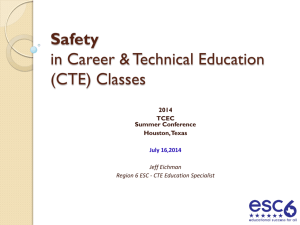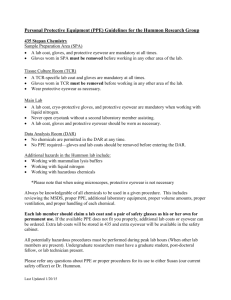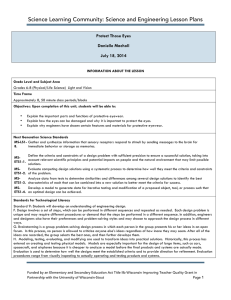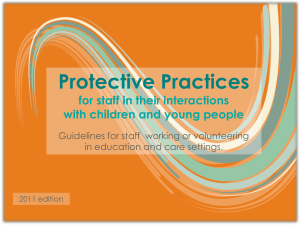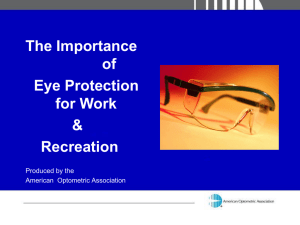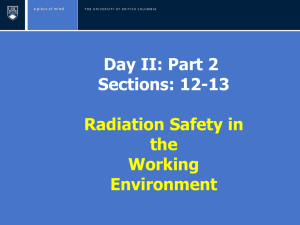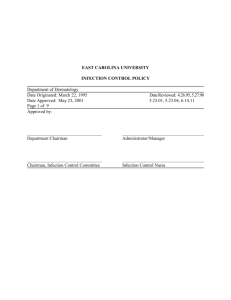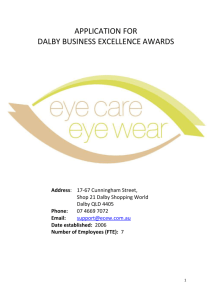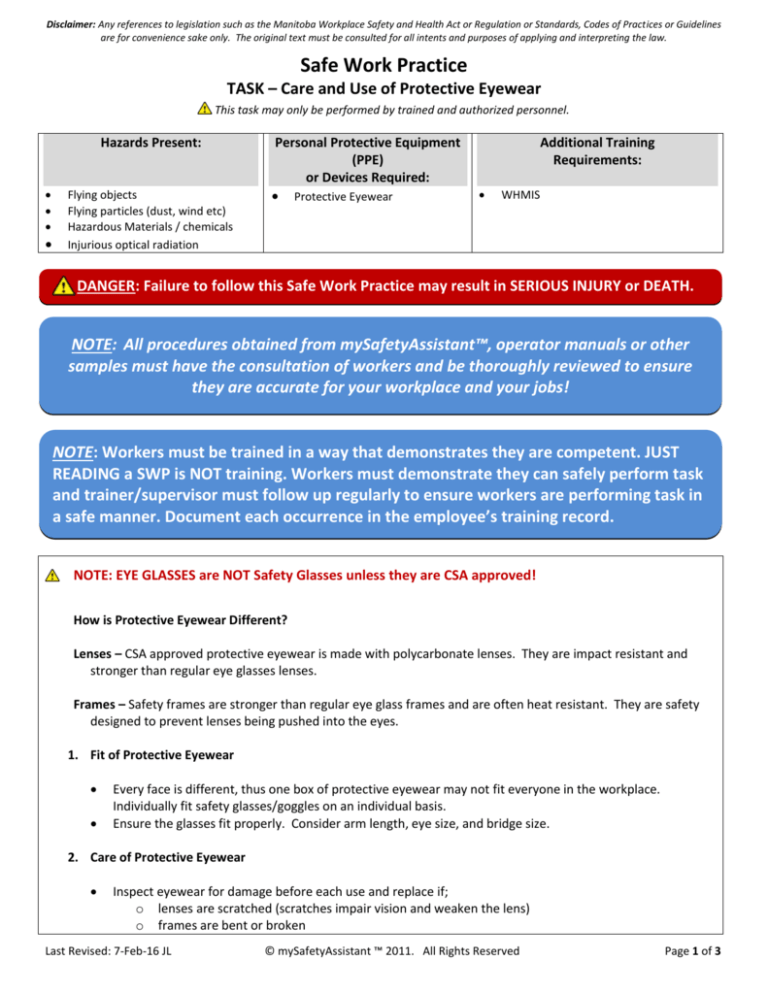
Disclaimer: Any references to legislation such as the Manitoba Workplace Safety and Health Act or Regulation or Standards, Codes of Practices or Guidelines
are for convenience sake only. The original text must be consulted for all intents and purposes of applying and interpreting the law.
Safe Work Practice
TASK – Care and Use of Protective Eyewear
This task may only be performed by trained and authorized personnel.
Hazards Present:
Flying objects
Flying particles (dust, wind etc)
Hazardous Materials / chemicals
Injurious optical radiation
Personal Protective Equipment
(PPE)
or Devices Required:
Protective Eyewear
Additional Training
Requirements:
WHMIS
DANGER: Failure to follow this Safe Work Practice may result in SERIOUS INJURY or DEATH.
NOTE: All procedures obtained from mySafetyAssistant™, operator manuals or other
samples must have the consultation of workers and be thoroughly reviewed to ensure
they are accurate for your workplace and your jobs!
NOTE: Workers must be trained in a way that demonstrates they are competent. JUST
READING a SWP is NOT training. Workers must demonstrate they can safely perform task
and trainer/supervisor must follow up regularly to ensure workers are performing task in
a safe manner. Document each occurrence in the employee’s training record.
NOTE: EYE GLASSES are NOT Safety Glasses unless they are CSA approved!
How is Protective Eyewear Different?
Lenses – CSA approved protective eyewear is made with polycarbonate lenses. They are impact resistant and
stronger than regular eye glasses lenses.
Frames – Safety frames are stronger than regular eye glass frames and are often heat resistant. They are safety
designed to prevent lenses being pushed into the eyes.
1. Fit of Protective Eyewear
Every face is different, thus one box of protective eyewear may not fit everyone in the workplace.
Individually fit safety glasses/goggles on an individual basis.
Ensure the glasses fit properly. Consider arm length, eye size, and bridge size.
2. Care of Protective Eyewear
Inspect eyewear for damage before each use and replace if;
o lenses are scratched (scratches impair vision and weaken the lens)
o frames are bent or broken
Last Revised: 7-Feb-16 JL
© mySafetyAssistant ™ 2011. All Rights Reserved
Page 1 of 3
Disclaimer: Any references to legislation such as the Manitoba Workplace Safety and Health Act or Regulation or Standards, Codes of Practices or Guidelines
are for convenience sake only. The original text must be consulted for all intents and purposes of applying and interpreting the law.
o lenses are pitted
Proper maintenance of your eyewear is critical, or they will need to be replaced far more often than
necessary. Protective eyewear needs to be cleaned after each use or at the end of each work day. Follow
the manufacturer’s instructions.
3. Proper selection of protective eyewear
It is important to research the types of protective eyewear that you require for the specific job that you are
performing. These classes of protective eyewear typically provide the following hazard protection:
Class
Eye Protection
Class 1
Spectacles
Class 2
Goggles
Class 3
Welding helmet
Class 4
Welding Hand Shield
Class 5
Class 6
Non-Ridged Hoods
Face Shields
Hazards
flying objects flying particles and glare stray light
flying objects, flying particles, heat, sparks and splash from
molten materials, acid splash, chemical burns, glare, stray light,
Injurious optical radiation (moderate reduction of optical
radiation)
injurious optical radiation (large reduction of optical radiation)
injurious optical radiation (large reduction of optical radiation)
flying objects, flying particles, heat, sparks, and splash from
molten materials, acid splash, chemical burns, abrasive blasting
materials, glare, stray light, injurious optical radiation (moderate
reduction of optical radiation)
flying objects, flying particles, heat, sparks and splash from
molten materials, acid splash, chemical burns, abrasive blasting
materials, glare stray light, injurious optical radiation (moderate
reduction of optical radiation)l
or the tongue of the right shoe.
4. Storage
Follow manufacturer’s instructions.
Store in a safe dry area where they cannot be crushed or stepped on.
Store them in a glass case or bag to prevent scratches.
NOTICE: Report all hazardous situations to your supervisor without delay!
Last Revised: 7-Feb-16 JL
© mySafetyAssistant ™ 2011. All Rights Reserved
Page 2 of 3
Disclaimer: Any references to legislation such as the Manitoba Workplace Safety and Health Act or Regulation or Standards, Codes of Practices or Guidelines
are for convenience sake only. The original text must be consulted for all intents and purposes of applying and interpreting the law.
Guidance Documents / Standards /
Applicable Legislation / Other:
Guidance Documents:
Manufacturer’s Instructions / Manual
MSDS
CSA Standards
CSA-Z94.3-02 Eye and Face Protectors
CSA Z94.3.1-02, Protective Eyewear: A User’s Guide
Manitoba Workplace Safety and Health Regulation, MR
217/2006 as amended:
2.1.1 Safe Work Procedures
6.1 Personal Protective Equipment
This Safe Work Practice will be reviewed any time the
task, equipment, or materials change and at a
minimum every three years.
Completed / Approved By:
Date Completed:
SWP Last Reviewed / Revised by and date:
This Safe Work Practice has had the consultation of the following workers:
Name_____________________ Signature ____________________ Position _______________
Date: _________
Name_____________________ Signature ____________________ Position _______________
Date: _________
Name_____________________ Signature ____________________ Position _______________
Date: _________
Last Revised: 7-Feb-16 JL
© mySafetyAssistant ™ 2011. All Rights Reserved
Page 3 of 3

